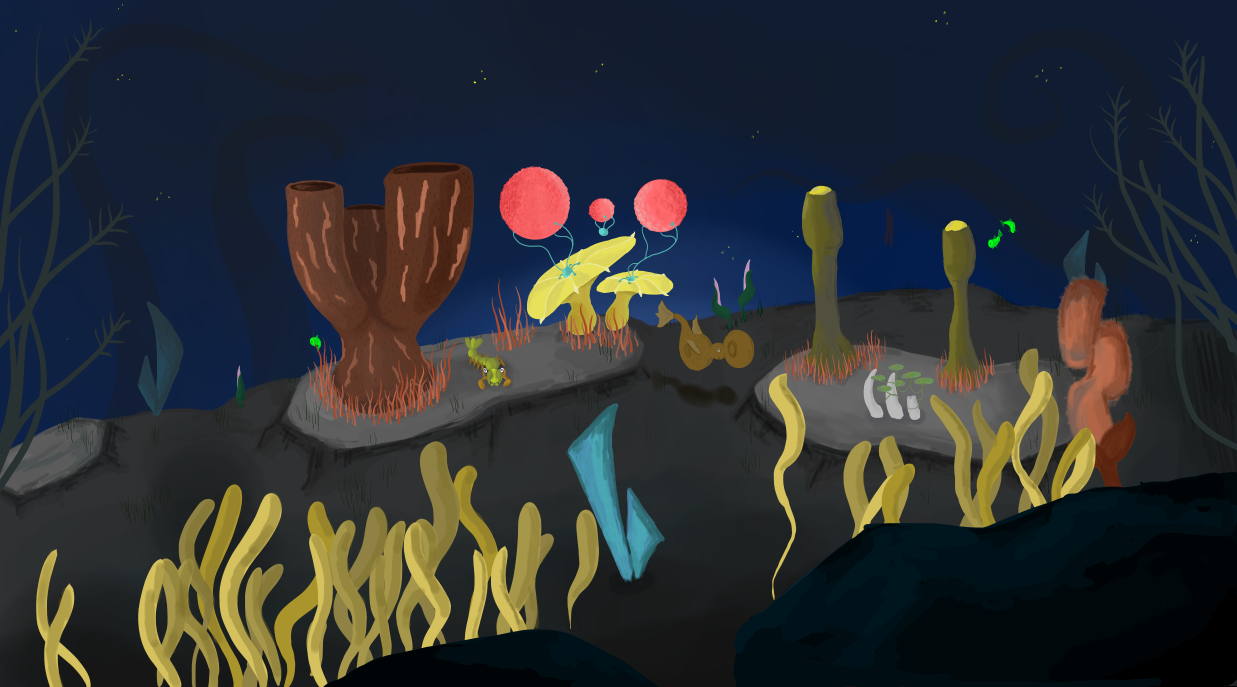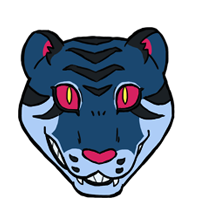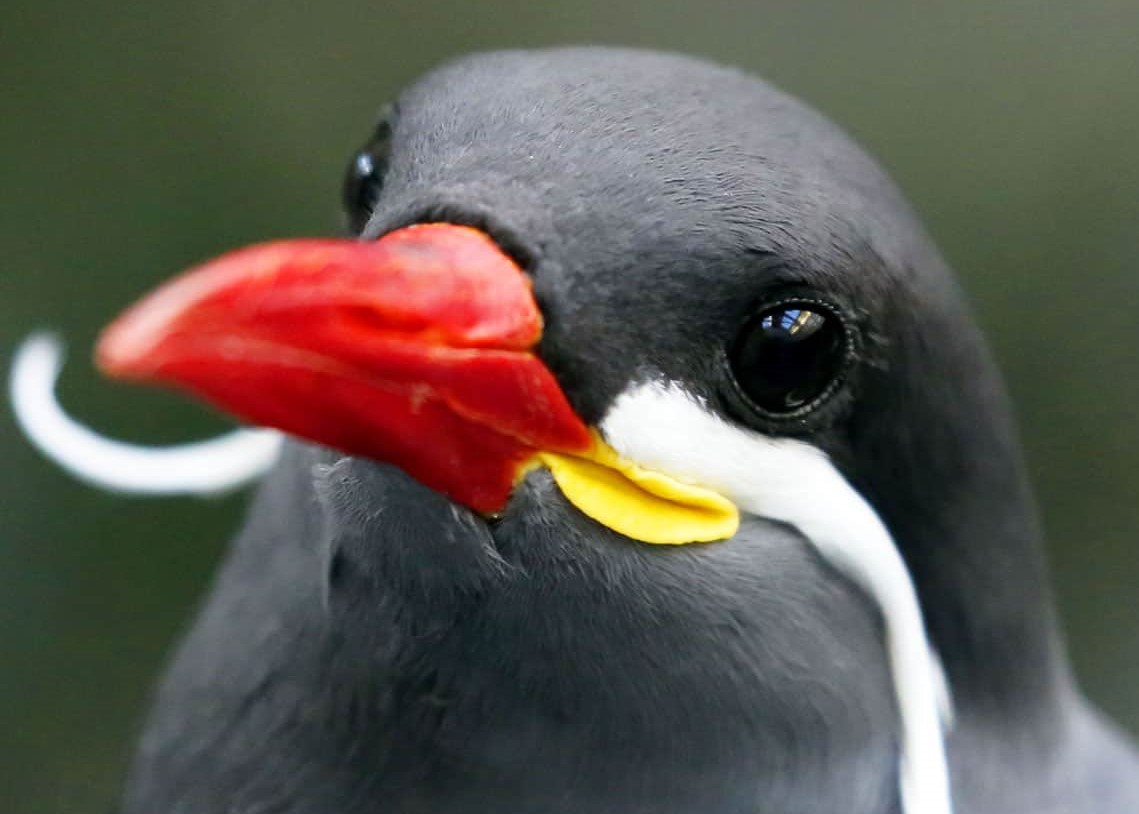Dave
Geography, Location & Climate
Dave is the fifth, and last, planet orbiting Pamela, the star in the AO5 System. It is located 12.7 astronomical units, or AU, from the star, with an almost perfectly spherical orbit so it never strays further or closer.
Orbital Period: 84 years
Moons: 99
and visible from space. These seven rocks are known as the core stones. As they roll around the inside of the planet, they keep the water in a perfect sphere thanks to gravity. These core stones are on average about 60,000 kilometres wide, and each stone provides a home for a legendary, fabled creature.
The outer ocean of the planet is a consistently warm climate, with tropical plants and animal species inhabiting it.
There are three more oceans at different layers, each colder than the other as they get progressively closer to the "core". Sunlight cannot reach the innermost ocean of the planet, and the creatures here are of an incredible size, yet completely docile.
Inner Ocean
The Inner Ocean is treated as the core of the planet to some davites. The ocean is just an eighth of the radius of Dave, and makes up just a fraction of the planet's mass. The pressure in the Inner Ocean is so great that it instantly kills any native davite that gets close. Because of the way Dave's oceans are formed, the pressure change is almost instant, making it easy to swim into and be crushed by the pressure.
Gelatinous Ocean
The Gelatinous Ocean is named because of its unusual jelly-like composition. Native animals are able to swim through the sea with ease as they are used to it, but for non-native animals and people, it is incredibly difficult. There are many reports of scientists able to walk through the ocean while studying the life there.
Outer Ocean
The Outer Ocean is easily the largest ocean on the planet, despite being just three-eights of the radius of the planet. The Outer Ocean is the outermost ocean of the planet, covering the entirety of Dave's surface and is the only ocean to be seen from space.
Moons
Dave is orbited by 99 moons, a type of natural satellite. The moons control the tides of the planet, and since there is no land the surface of the ocean is a constant mess of waves crashing against each other, as each moon tries to pull the water in different directions as they all orbit at different speeds, and in different directions.History
Dave is approximately 1 billion years old, by far the youngest planet in the solar system. Dave was formed when a labyrinth sea collided with several asteroids during a magic hailstorm. This magic locked the asteroids in a perfect orbit of each other, forming a perfect sphere. As all celestial objects do, Dave spawned life immediately. The life was simple, in the form of marine invertebrates, but nevertheless it existed.
Davites appeared no more than thirty thousand years ago. The mutations that led to a highly complex nervous system led to davites evolving so much faster than other creatures developed. Within these thirty thousand years they progressed from simple lifeforms to fully functioning people, capable of thoughts and emotions similar to other sophonts, albeit much different thanks to their biologies.
Dave progressed into becoming a space-faring planet three thousand years ago. With their intelligence their technologies surpassed many other species they met in their voyages to discover new lands. Wherever they went, they discovered people had a severe disregard for lifeforms not sophontic, which they disagreed with. Because of this, davites are rarely seen in space and space colonies, preferring the comfort of their own homes where they loudly advocate for people to treat other animals with respect.
Biota
Just one sophontic species lives on Dave; the jellyfish-resembling davites. They are impressively large creatures with a centralised nervous system, which differs them from their jellyfish cousins. These people release acids into the water, which lowers the entire planet's overall pH, and as a result the planet is rather painful for foreigners if you do not wear protective equipment.
Aside from davites, there are millions of interesting animal species in the planet. Different ecosystems live centered around each core stone. Each core stone revolves around the planet in a certain oceanic layer. As well, thanks to the sudden change in temperature, pressure, and overall climate, completely different animals live in different oceanic layers.
Dave Space Legion
Unsurprisingly, Dave's Space Legion is beyond determined to establish laws in protecting native species of planets. It is against the law (funnily enough, as they are the ones establishing laws) to write laws affecting the life and environments of planets themselves, so davites have struggled to make meaningful impacts in this department.
The Dave Space Legion's Satellite Base resides on Omolla, a moon orbiting the planet. Davites have great relations with the moons inhabitants, the molla mollas, and they were more than happy to let the cnidarians occupy a small plot of land for their Satellite Base. The Legion's Planetary Base can be found in Ivin, a small town nestled within a copper kelp forest.











This has gotta be one of the wackiest planets I've seen on world anvil. And I just love how it's called Dave
Thank youuuu! I am very proud of this planet xD